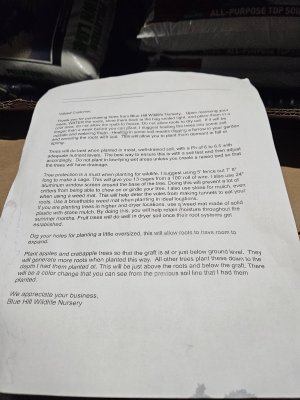TWalter91
5 year old buck +
Received my apple/crabs from bluehill today. Took a quick look at his planting instructions and noticed on the last paragraph he said to plant the tree so the graft is at or below ground level. Every apple tree I have planted in the past I had it so that the graft is a couple of inches above the ground. But that was with m111/b118 rootstock.
Is it different with dolgo rootstock? Would the tree be just as good if I planted it couple of inches above? Thanks!

Is it different with dolgo rootstock? Would the tree be just as good if I planted it couple of inches above? Thanks!

